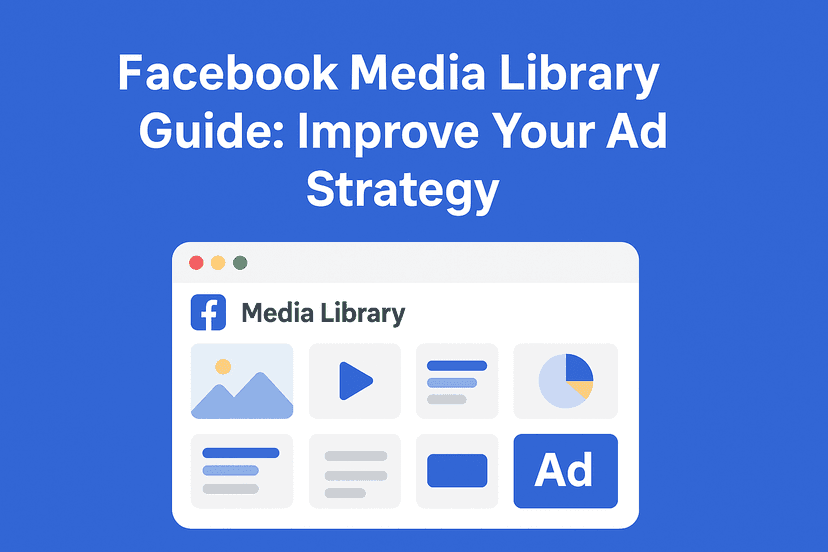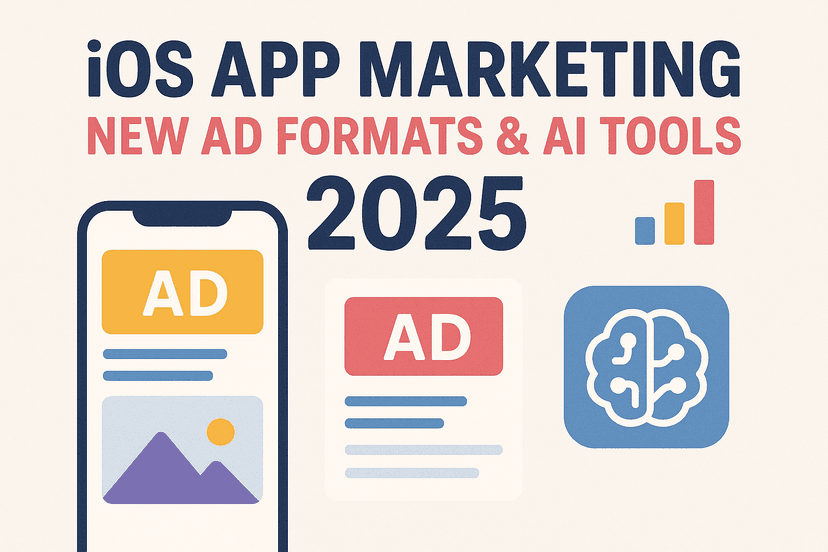- Introduction
- Understanding the Major Change
- What This Means for Campaign Management
- The Technology Behind AI Language Detection
- Impact on Different Business Types
- Preparing Your Campaigns for the Transition
- Potential Challenges and Solutions
- Best Practices for the New System
- Monitoring and Optimization Strategies
- Future Implications for Digital Marketing
- Conclusion
Introduction
Google Ads is making a significant change that will reshape how advertisers approach language targeting in their search campaigns. By the end of 2025, the platform will completely phase out manual language targeting options for Search campaigns, transitioning to an entirely AI-powered language detection system. This shift represents one of the most substantial changes to Google Ads campaign management in recent years, affecting millions of advertisers worldwide.
The move toward automated language targeting reflects Google’s broader strategy of leveraging artificial intelligence to streamline advertising processes while potentially improving targeting accuracy. However, this transition also means advertisers will lose a significant degree of control over their campaign targeting parameters, creating both opportunities and challenges for digital marketers.
For businesses that have relied on precise language targeting to reach specific audiences or avoid certain markets, this change requires careful consideration and strategic planning. Understanding the implications of google ads no language settings will be crucial for maintaining campaign effectiveness during and after this transition.
Understanding the Major Change
The retirement of manual language targeting in Google Ads Search campaigns marks a fundamental shift in how the platform operates. Previously, advertisers could specify exactly which languages they wanted to target, giving them direct control over who would see their ads based on language preferences and browser settings.
Under the new system, Google’s artificial intelligence will automatically detect user languages through various signals and behavioral patterns. This means that when setting up or managing Search campaigns, advertisers will no longer see the familiar language targeting options that have been a staple of campaign configuration for years.
The change specifically affects Search campaigns, which are often the primary revenue drivers for many businesses. These campaigns typically account for the largest portion of advertising spend and generate the most direct response from potential customers. The impact of removing manual language controls from these high-stakes campaigns cannot be understated.
What makes this transition particularly significant is that it represents Google’s confidence in its AI systems to make better targeting decisions than manual selection. The company believes that automated language detection will be more accurate and effective than the current system, where advertisers manually select target languages based on their understanding of their audience.
However, this shift also highlights a trend toward reduced advertiser control in favor of automated systems. Many advertisers have expressed concerns about losing the ability to make precise targeting decisions, especially for businesses that serve very specific linguistic markets or need to avoid certain regions for compliance or strategic reasons.
What This Means for Campaign Management
The elimination of manual language targeting fundamentally changes how advertisers approach campaign setup and management. Previously, language targeting was one of the first decisions made when creating a new Search campaign, alongside location targeting and budget allocation. Now, this step will be entirely automated, requiring advertisers to adapt their campaign strategies accordingly.
Campaign managers will need to develop new approaches to ensure their ads reach the intended audiences. Without the ability to specify target languages directly, advertisers must rely more heavily on other targeting methods and optimization techniques. This includes focusing more intensively on keyword selection, ad copy localization, and geographic targeting to influence which audiences see their campaigns.
The change also affects campaign organization strategies. Many advertisers previously structured their campaigns around language targeting, creating separate campaigns for different language markets. This approach allowed for customized ad copy, specific keyword lists, and tailored budgets for each linguistic segment. With google ads no language settings available, advertisers may need to restructure their entire account organization.
Quality control becomes more challenging without manual language targeting. Advertisers who previously used language settings to prevent their ads from showing in markets where they cannot provide adequate customer support or fulfill orders will need to implement alternative safeguards. This might involve more restrictive geographic targeting or negative keyword strategies to minimize unwanted traffic.
The reporting and analysis process will also change significantly. Advertisers will need to monitor language-related performance metrics more closely to understand how Google’s AI system is distributing their ads across different language groups. This requires developing new reporting frameworks and key performance indicators that account for the automated nature of language targeting.
The Technology Behind AI Language Detection
Google’s AI-powered language detection system represents a sophisticated approach to understanding user language preferences that goes far beyond simple browser settings or IP address location. The system analyzes multiple data points to determine the most appropriate language for displaying ads, creating a more nuanced understanding of user preferences than traditional manual targeting methods.
The AI system considers user search history patterns, including the languages of queries and the types of websites visited. It also analyzes user interaction patterns with different types of content and advertisements to build a comprehensive profile of language preferences. This behavioral analysis allows the system to identify users who may be multilingual or who prefer content in a language different from their geographic location.
Browser and device settings still play a role in the AI decision-making process, but they are weighted against other signals rather than being the primary determining factor. The system can recognize when users have changed their language preferences or when their behavior suggests different language interests than their default settings might indicate.
The machine learning algorithms continuously improve their accuracy by analyzing the performance of language targeting decisions. When users engage positively with ads in specific languages, this feedback helps train the system to make better predictions for similar users in the future. This creates a self-improving cycle that theoretically becomes more accurate over time.
Geographic signals are also integrated into the language detection process, but in a more sophisticated way than simple location-based targeting. The AI considers the linguistic diversity of specific regions and can make more nuanced decisions about language targeting in multilingual areas or regions with significant immigrant populations.
Impact on Different Business Types
The transition to automated language targeting affects different types of businesses in varying ways, with some experiencing minimal impact while others face significant operational challenges. Understanding these differences is crucial for developing appropriate adaptation strategies.
Local service businesses that primarily serve monolingual markets may see little immediate impact from the change. Since these businesses typically target users within specific geographic boundaries who predominantly speak the local language, Google’s AI system will likely continue directing relevant traffic to their campaigns. However, these businesses should monitor for any unintended expansion into markets they cannot serve.
Ecommerce Marketing businesses with international operations face more complex challenges. Companies that have carefully structured their campaigns around specific language markets to control inventory availability, shipping costs, and customer service capabilities may find their ads appearing in markets they are not equipped to serve effectively. This could lead to increased bounce rates, poor customer experiences, and wasted advertising spend.
SaaS and technology companies often serve global markets but may have limited customer support capabilities in certain languages. Without manual language targeting controls, these businesses may receive inquiries or sign-ups from users who speak languages their support teams cannot handle effectively. This could impact customer satisfaction and retention rates.
Professional service providers, such as legal or financial advisors, face particular challenges because their services are often subject to regional regulations and licensing requirements. These businesses previously relied on language targeting to ensure their ads only appeared to users in markets where they could legally provide services. The loss of this control mechanism requires alternative approaches to compliance management.
Content publishers and media companies that produce material in specific languages may struggle to ensure their ads reach the most relevant audiences. Without the ability to specify target languages directly, these businesses must rely more heavily on keyword targeting and content optimization to signal language preferences to Google’s AI system.
Preparing Your Campaigns for the Transition
Successful adaptation to the new system requires proactive preparation and strategic adjustments to existing campaigns. Advertisers should begin implementing changes well before the full transition to ensure smooth operations when manual language targeting becomes unavailable.
Account structure review represents the first critical step in preparation. Advertisers should evaluate their current campaign organization and determine whether their existing structure will remain effective without manual language targeting. This may involve consolidating campaigns that were previously separated by language or restructuring account hierarchies to better support automated targeting.
Keyword strategy optimization becomes even more important in the new environment. Since advertisers cannot directly specify target languages, keyword selection and match types must effectively communicate language preferences to Google’s AI system. This includes incorporating language-specific terms, cultural references, and region-specific terminology that clearly indicate intended audience segments.
Ad copy localization requires enhanced attention to ensure that advertisements clearly signal their intended linguistic audience. This goes beyond simple translation to include cultural adaptation, local terminology usage, and region-specific offers or messaging that help Google’s AI understand the target market for each ad group.
Geographic targeting settings should be reviewed and potentially refined to work more effectively with automated language detection. While location targeting remains available, it may need to be more precisely configured to complement the AI-driven language selection process and prevent ads from appearing in unintended markets.
Negative keyword lists should be expanded to include terms that might attract unwanted traffic from users who speak languages the business cannot effectively serve. This defensive strategy helps protect against wasted spend and poor user experiences that could result from overly broad automated targeting.
Potential Challenges and Solutions
The shift to automated language targeting introduces several challenges that advertisers must anticipate and address through strategic planning and ongoing optimization efforts. Understanding these potential issues and developing solutions in advance can minimize disruption to campaign performance.
Traffic quality control represents one of the most significant challenges in the new system. Without direct language targeting controls, advertisers may receive traffic from users who speak languages they cannot effectively serve. This can lead to higher bounce rates, lower conversion rates, and increased customer service burdens. Solutions include implementing more sophisticated landing page experiences that can detect user language preferences and provide appropriate content or redirect options.
Budget efficiency may suffer if ads appear to audiences that are less likely to convert due to language barriers or market misalignment. Advertisers need to develop more sophisticated bidding strategies and performance monitoring systems to quickly identify and address inefficient spending patterns. This might involve more frequent budget adjustments and enhanced automated bidding rule configurations.
Brand safety concerns arise when ads appear in markets where businesses cannot provide adequate customer service or fulfill their promises effectively. Companies must develop contingency plans for handling inquiries or orders from unexpected markets, including clear communication about service limitations and appropriate referral mechanisms when possible.
Competitive positioning may shift as automated targeting changes which audiences see specific advertisements. Businesses may find themselves competing in markets they previously avoided or losing visibility in their primary target markets. This requires enhanced competitive monitoring and potentially adjusted bidding strategies to maintain desired market positioning.
Compliance and regulatory issues become more complex when businesses cannot precisely control which markets see their advertisements. Companies operating in regulated industries must develop additional safeguards to ensure their ads do not appear in jurisdictions where they lack proper licensing or where their services may not be legally available.
Best Practices for the New System
Adapting to google ads no language settings requires developing new best practices that maximize the effectiveness of automated language targeting while minimizing potential drawbacks. These practices should be integrated into regular campaign management routines and continuously refined based on performance data.
Enhanced keyword research becomes crucial for communicating target audience preferences to Google’s AI system. This involves identifying not just primary keywords but also language-specific variations, cultural terms, and regional expressions that clearly indicate the intended linguistic audience. Keyword research tools should be used to identify terms that are popular among specific language groups while avoiding terms that might attract unwanted traffic.
Sophisticated ad copy testing helps optimize how Google’s AI interprets campaign targeting intent. A/B testing should focus not just on conversion performance but also on whether ads are reaching the intended linguistic audiences. This includes testing different levels of localization, cultural references, and language-specific calls to action to determine which approaches most effectively communicate targeting preferences to the automated system.
Landing page optimization must account for the possibility of receiving traffic from unexpected language groups. This includes implementing language detection and appropriate routing mechanisms, providing clear language selection options, and ensuring that users who arrive from automated targeting can easily find relevant content in their preferred language.
Performance monitoring requires new metrics and reporting frameworks that account for language-related performance variations. Advertisers should develop dashboards that can quickly identify when campaigns are receiving traffic from unintended language groups and establish alert systems for unusual performance patterns that might indicate targeting issues.
Bid management strategies should incorporate language performance data to optimize spending efficiency. This might involve developing automated rules that adjust bids based on performance patterns associated with different language groups or implementing more sophisticated audience targeting to complement the automated language detection.
Monitoring and Optimization Strategies
Effective monitoring becomes even more critical when advertisers lose direct control over language targeting decisions. Developing comprehensive monitoring systems that can quickly identify issues and opportunities will be essential for maintaining campaign performance in the new environment.
Performance segmentation by inferred language groups helps advertisers understand how their campaigns perform across different linguistic audiences. While Google may not provide explicit language breakdowns in standard reporting, advertisers can use geographic data, keyword performance, and user behavior patterns to identify language-related performance trends.
Conversion tracking sophistication must increase to account for the complexities introduced by automated language targeting. This includes implementing enhanced attribution models that can account for cross-language user journeys and developing custom conversion actions that help identify high-value traffic sources among diverse linguistic audiences.
Quality score monitoring becomes more important as automated targeting may affect the relevance between keywords, ads, and landing pages for different language groups. Regular quality score analysis can help identify when campaigns are not effectively communicating their targeting intent to Google’s AI system.
Competitive intelligence should be expanded to monitor how competitors are adapting to the new system and identify opportunities or threats that arise from changes in automated targeting patterns. This includes tracking competitor ad copy strategies, keyword targeting approaches, and geographic expansion or contraction patterns.
Customer feedback integration helps validate whether automated targeting is effectively reaching intended audiences and avoiding problematic market segments. This includes monitoring customer service inquiries, sales conversations, and user-generated feedback to identify patterns that might indicate targeting misalignment.
Future Implications for Digital Marketing
The elimination of manual language targeting in Google Ads Search campaigns represents part of a broader trend toward increased automation and reduced advertiser control across digital marketing platforms. Understanding these implications helps marketers prepare for continued evolution in how online advertising operates.
The shift signals Google’s confidence in AI systems to make better targeting decisions than manual selection, suggesting that similar automation may be applied to other targeting parameters in the future. Advertisers should prepare for the possibility that geographic targeting, demographic targeting, or other manual controls may also become automated over time.
Cross-platform consistency may become more important as Google’s approach influences other advertising platforms. If automated language targeting proves successful, other major platforms may implement similar systems, requiring advertisers to develop strategies that work effectively across multiple automated environments.
Data strategy implications include the need for enhanced first-party data collection and utilization to complement automated targeting systems. As platforms take more control over targeting decisions, businesses with superior customer data and insights may gain competitive advantages in guiding automated systems toward optimal performance.
The evolution suggests that future digital marketing success will depend more heavily on creative excellence, landing page optimization, and customer experience quality rather than targeting precision. Advertisers who excel in these areas may benefit more from automated systems than those who previously relied primarily on targeting sophistication.
International expansion strategies must account for reduced control over market entry timing and methods. Businesses planning global expansion may need to adapt their approaches to work more effectively with automated systems that might introduce them to new markets earlier than planned or in different sequences than originally intended.
Conclusion
The retirement of manual language targeting in Google Ads Search campaigns represents a significant shift that will reshape how advertisers approach campaign management and audience targeting. While Google’s AI-powered language detection system promises improved accuracy and simplified setup processes, the transition also introduces new challenges that require strategic adaptation and enhanced monitoring capabilities.
Successful navigation of this change requires proactive preparation, including account structure reviews, enhanced keyword strategies, and sophisticated performance monitoring systems. Advertisers must develop new best practices that maximize the effectiveness of automated targeting while implementing safeguards against potential issues such as traffic quality problems or unintended market expansion.
The impact of google ads no language settings will vary significantly across different business types, with some experiencing minimal disruption while others face substantial operational challenges. Understanding these differences and developing appropriate adaptation strategies will be crucial for maintaining advertising effectiveness throughout the transition period.
Looking forward, this change represents part of a broader trend toward increased automation in digital marketing platforms. Advertisers who successfully adapt to reduced manual control while leveraging enhanced optimization and monitoring capabilities will be better positioned for continued success in an increasingly automated advertising landscape. The key to thriving in this new environment lies in balancing acceptance of automated systems with strategic oversight and continuous optimization based on performance data and customer feedback.
Google link to this information: https://support.google.com/google-ads/answer/1722078







